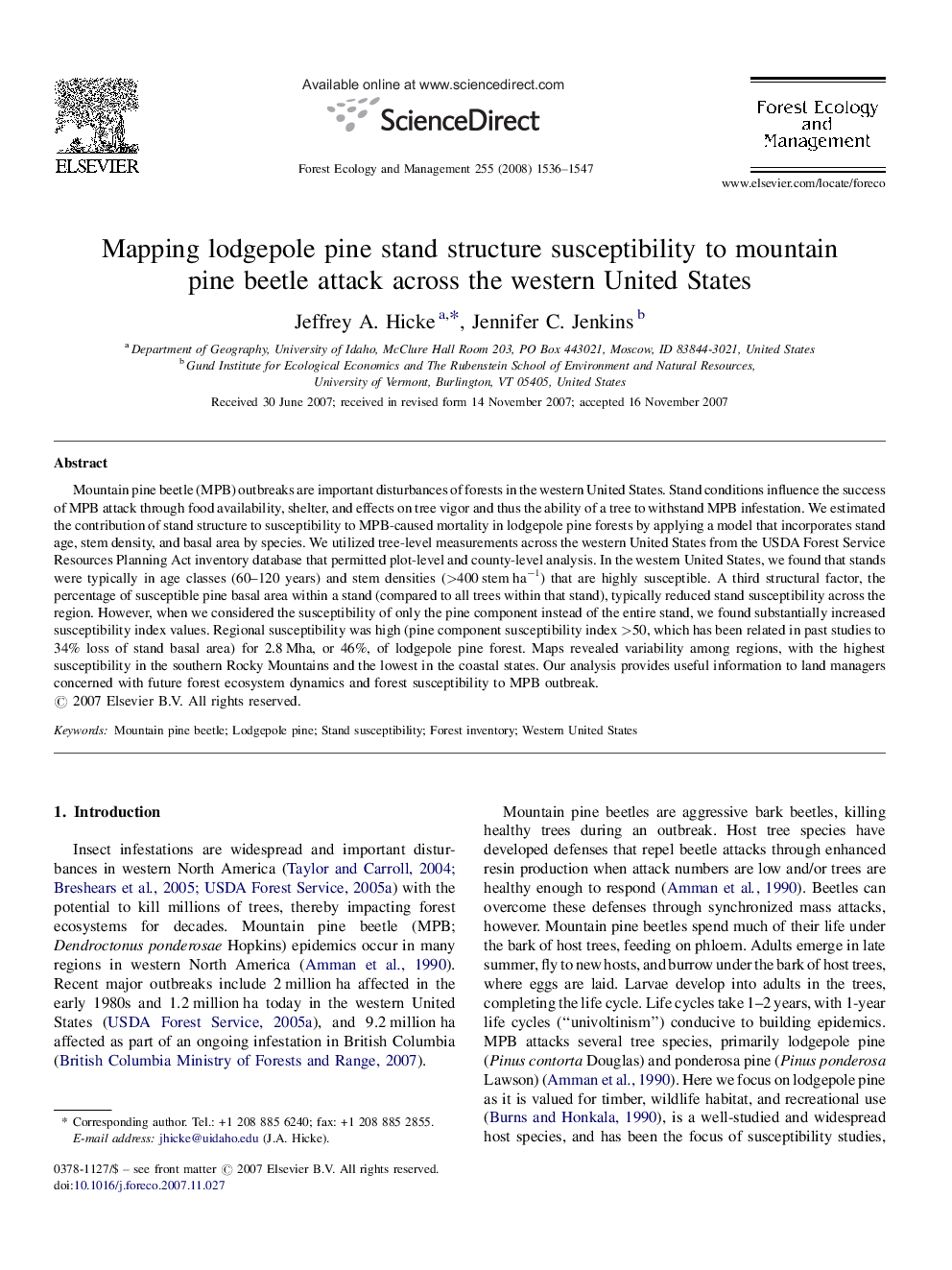| Article ID | Journal | Published Year | Pages | File Type |
|---|---|---|---|---|
| 89484 | Forest Ecology and Management | 2008 | 12 Pages |
Mountain pine beetle (MPB) outbreaks are important disturbances of forests in the western United States. Stand conditions influence the success of MPB attack through food availability, shelter, and effects on tree vigor and thus the ability of a tree to withstand MPB infestation. We estimated the contribution of stand structure to susceptibility to MPB-caused mortality in lodgepole pine forests by applying a model that incorporates stand age, stem density, and basal area by species. We utilized tree-level measurements across the western United States from the USDA Forest Service Resources Planning Act inventory database that permitted plot-level and county-level analysis. In the western United States, we found that stands were typically in age classes (60–120 years) and stem densities (>400 stem ha−1) that are highly susceptible. A third structural factor, the percentage of susceptible pine basal area within a stand (compared to all trees within that stand), typically reduced stand susceptibility across the region. However, when we considered the susceptibility of only the pine component instead of the entire stand, we found substantially increased susceptibility index values. Regional susceptibility was high (pine component susceptibility index >50, which has been related in past studies to 34% loss of stand basal area) for 2.8 Mha, or 46%, of lodgepole pine forest. Maps revealed variability among regions, with the highest susceptibility in the southern Rocky Mountains and the lowest in the coastal states. Our analysis provides useful information to land managers concerned with future forest ecosystem dynamics and forest susceptibility to MPB outbreak.
